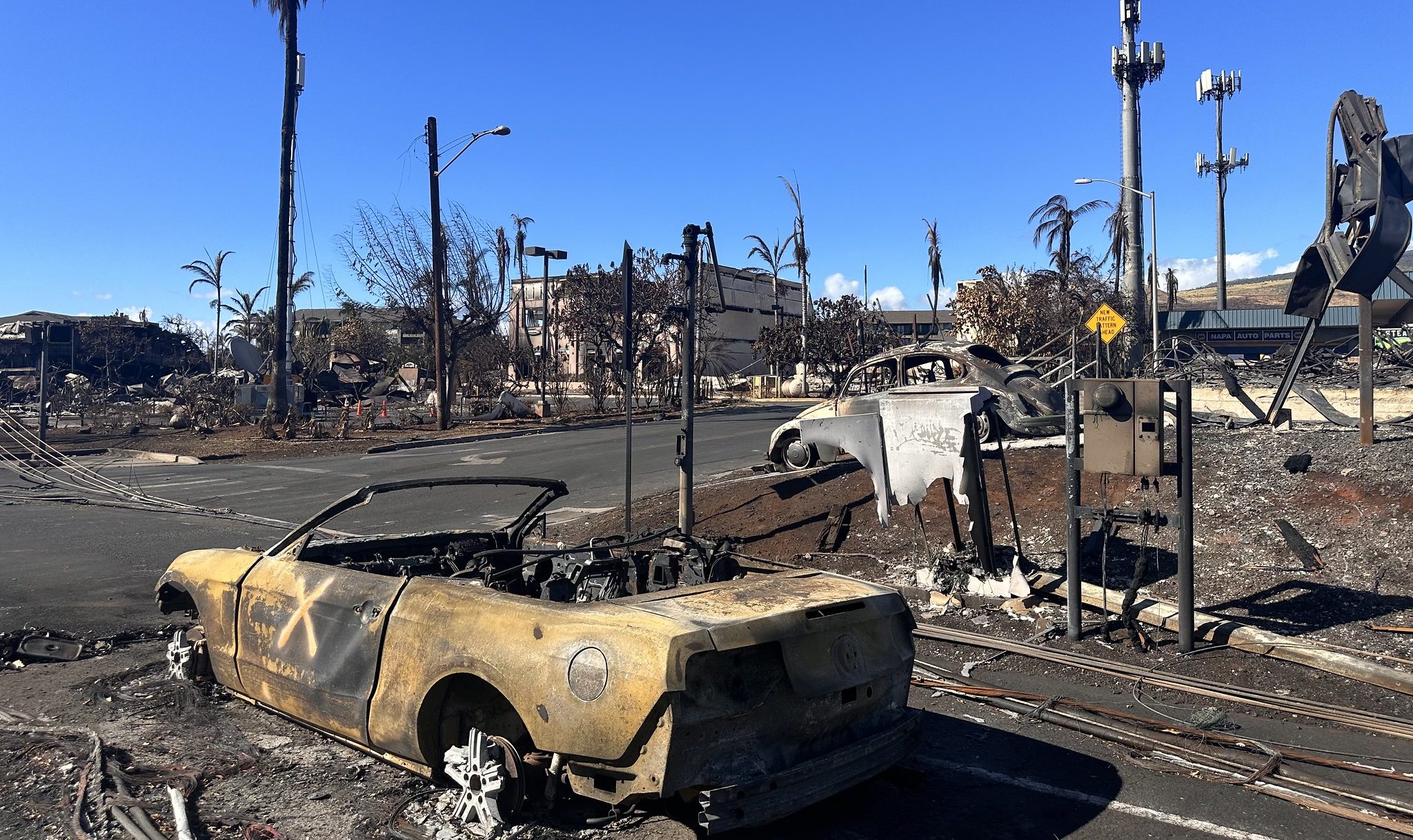A Hawaii public transportation agency has become a powerful lifeline for a devastated community in both the midst and the aftermath of historic wildfires — and now, they're spotlighting a fundraiser to give back even more.
At least 97 people died on Aug. 8 when wind-whipped wildfires engulfed much of the Lahaina Town region of the island of Maui, making the blaze one of the most deadliest in over a century of U.S. history. That death toll might have been far higher, though, had local transit provider Maui Bus not sprang into action to get residents and visitors to safety.
When downed power lines blocked its normal routes and the cellular networks the agency uses to communicate with its drivers went down, Marc Takamori, director of the Maui County Department of Transportation, said officials quickly called on police to mobilize bus fleets to transport stranded residents and visitors to a nearby evacuation center. When that evacuation center was itself threatened by the growing fire, Maui buses moved survivors to another one, and later, to the airports, ultimately transporting more than 42,000 people off the island in the days that followed.
The heroism of Maui Bus staff is just the latest example the critical role that transit can play when catastrophe strikes — particularly for people who don't own cars. But that doesn't mean every U.S. transit agency has the resources they need to accomplish similar rescues.
According to a 2008 report from the National Academy of Sciences, "few urban areas have planned for a major disaster and evacuation ... or have focused on the role of transit and other public transportation providers in such an incident." And later research suggests they still aren't doing it; in 2018, Florida Atlantic University researcher John Renne wrote that "society can no longer afford to ignore evacuation planning for carless and vulnerable populations." Renne detailed how that unacceptable status quo is poised to grow more urgent as our population ages and gives up driving, as fewer people can afford to own a car, and as climate-related disasters accelerate.
In Maui, some of those who attempted to evacuate by private vehicle found themselves trapped in standstill traffic as the fires approached and roads were rendered impassable by downed power lines; some died inside their cars, while others were forced to leave vehicles to burn and climb over a seawall and into the ocean to save themselves.
"In terms of mass evacuations, if everybody hops in their own vehicle and starts to drive off, it’s going to be mass chaos just because of the gridlock," added Takamori. "Mass transportation is essential for people who don’t have a car, or who don’t drive a car. That's usually those are younger folks and older folks — those gap groups that we’re trying to ensure we provide [for]."
In the days and weeks after the evacuations, the importance of transit to the Maui community became even more pronounced. Maui Bus has since set up circulator shuttles to connect the shelters and hotels, where many survivors are still living, to resources throughout the island, including meetings with caseworkers at FEMA and the Red Cross, medical and mental health appointments, and access to family services and resource centers working to locate loved ones who remain missing. The agency has brought volunteers to food distribution centers and extended its hours to get voters to a council meeting about how best to rebuild. It even brought some survivors to see President Biden speak during his visit to the island.
In the meantime, transit officials have also been working hard to restore regular service to a community that's been profoundly changed. Flexible paratransit services were able to relaunch fairly quickly, but fixed-route services have proved more challenging, not least because one of Maui Bus' primary transfer hubs was located in the center of Lahaina Town in front of a movie theater that burned to the ground, Takamori said. The agency was able to combine two of its former routes to give west Maui residents some access to the center of the island, but the trip now takes two hours each way, and it's not ideal.
Of course, Takamori recognizes that shared transportation options are far from the only thing the people of his community lost in the fire. Many are grieving family members, friends, destroyed homes, and centuries of irreplaceable culture. That's why Maui Bus is currently working to raise money for Maui United Way; the agency's software provider, GMV, has already committed $25,000 to the effort, and is encouraging the transit community to match them.
"Maui’s so small, so most people will know someone who’s been effected, who’s lost a home or a loved one," Takamori added. "It’s still very emotional when you drive through the area. ... Just trying to get to the point of even knowing what it’s going to look when we’re able to rebuild — it’s just going to take a really long time. I think a lot of families are going to be displaced for years."
Takamori stressed that Maui bus isn't the only transportation provider in the region that deserves credit for its part in its evacuation and recovery efforts, citing private shuttle outfits, school bus operators, and many neighbors who have stepped up during the crisis. He recognizes, though, that public transportation plays a particularly critical role in the lives of many Hawai'i locals — and not just during the climate-related disasters that mass transit itself can help prevent.
"For people that utilize the public transportation system, it’s a lifeline for them," he adds. "For us to ensure that we can continue our services in one way or another is very important. We want to ensure people can live here, and that they can get where they need to go, no matter what."






